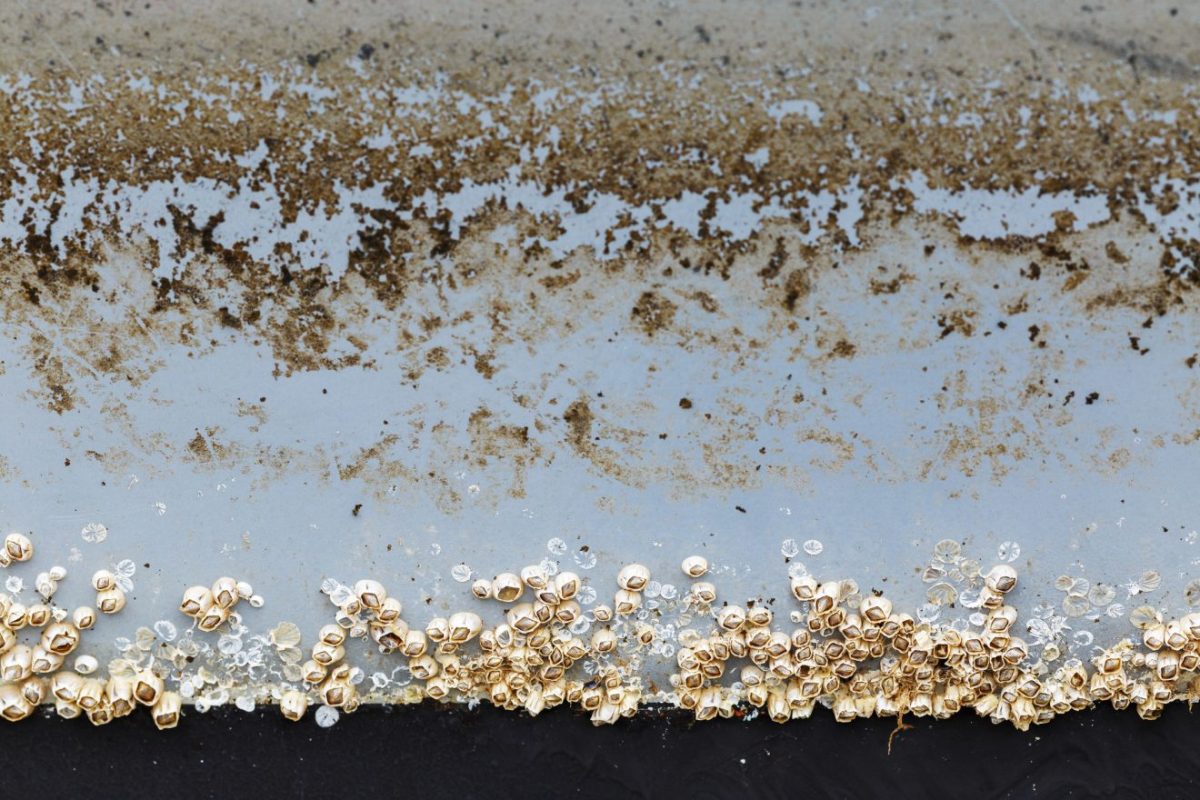Fouling Control Research May Reduce Fuel Consumption and Emissions
As oil prices remain high and there is an increasing urgency to reduce greenhouse gas emissions, new university research into methods to control biofouling may help lower fuel use for military and commercial ships.
“Proactive In-Water Ship Hull Grooming as a Method to Reduce the Environmental Footprint of Ships” is a recent publication featuring a team of Florida Tech researchers, including Geoffrey Swain, Melissa Tribou and Kelli Hunsucker. The article summarizes the findings of many years of research, funded by the Office of Naval Research, that investigated the development of an underwater, remotely operated vehicle and brush system designed to enable the proactive in-water cleaning and maintenance of a ship’s hull. The concept is analogous to a robotic vacuum for ships. The researchers have demonstrated that a robot designed for the frequent and gentle wiping of the ship hull will maintain the coating in a smooth and fouling-free condition.
This research coincides with the Navy’s goal of having a 12-year dry dock cycle and a reduction in fuel consumption. In the commercial sector, Carnival Cruise Line, with whom the Florida Tech Center for Corrosion and Biofouling Control works, is looking to reduce the intensity of CO2e (carbon dioxide equivalent) emissions from their operations by 40% relative to their 2008 baseline.
“In the past there have been fuel hikes, and when that happens, if you have a fleet of 40 ships, the fuel bill is astronomical,” Tribou, ocean engineering and marine sciences research professional said. “If you have a ship that is fouled, the increased drag imparts a penalty and the fuel consumption and costs increase. Therefore, there is a motivation to have your ships clean and operate fouling free the whole time they are at sea.”
The development of the brush concept required the design and creation of special tools engineered to effectively remove the biofouling while minimizing the force and damage to the coating. The long-term goal is to develop fully autonomous ship hull cleaners, so a system that requires little power was factored in as well. Prior research guided the choice to favor small-diameter (about 102 mm), vertically rotating brushes rotating at between 300-600 rpm.
Various categories of fouling control coatings were tested at Center’s Port Canaveral test site in relation to how they performed with and without the grooming system. The groomed coatings were maintained in a pristine condition; however, when Interspeed BRA640 (a copper ablative) and Intersleek 1100SR (silicone fouling release) were left to foul over a one-year period they both became covered by barnacles, tubeworms and encrusting bryozoans. The BRA640 was initially cleaned with a rotating polypropylene brush, but it was unable to remove the barnacle base plates, so a wire brush was applied. This removed the fouling but also most of the antifouling coating.
The IS1100 was cleaned using the polypropylene brush, which removed most of the fouling while allowing a small amount of biofilm to remain. Some damage also occurred to the coating where the brush filaments were allowed to dig into the coating and where calcareous, or chalky, fouling became entrapped in the brush causing scratches to the coating before being ejected.
Large-scale testing of a remotely operated vehicle (ROV) equipped with a grooming tool has demonstrated that grooming (proactive, frequent light cleaning) can maintain fouling control coatings in a smooth and fouling-free condition for extended periods without causing increases in the discharge of active ingredient into the environment. This concept is now being developed by several commercial companies as a service to ship owners and operators.





